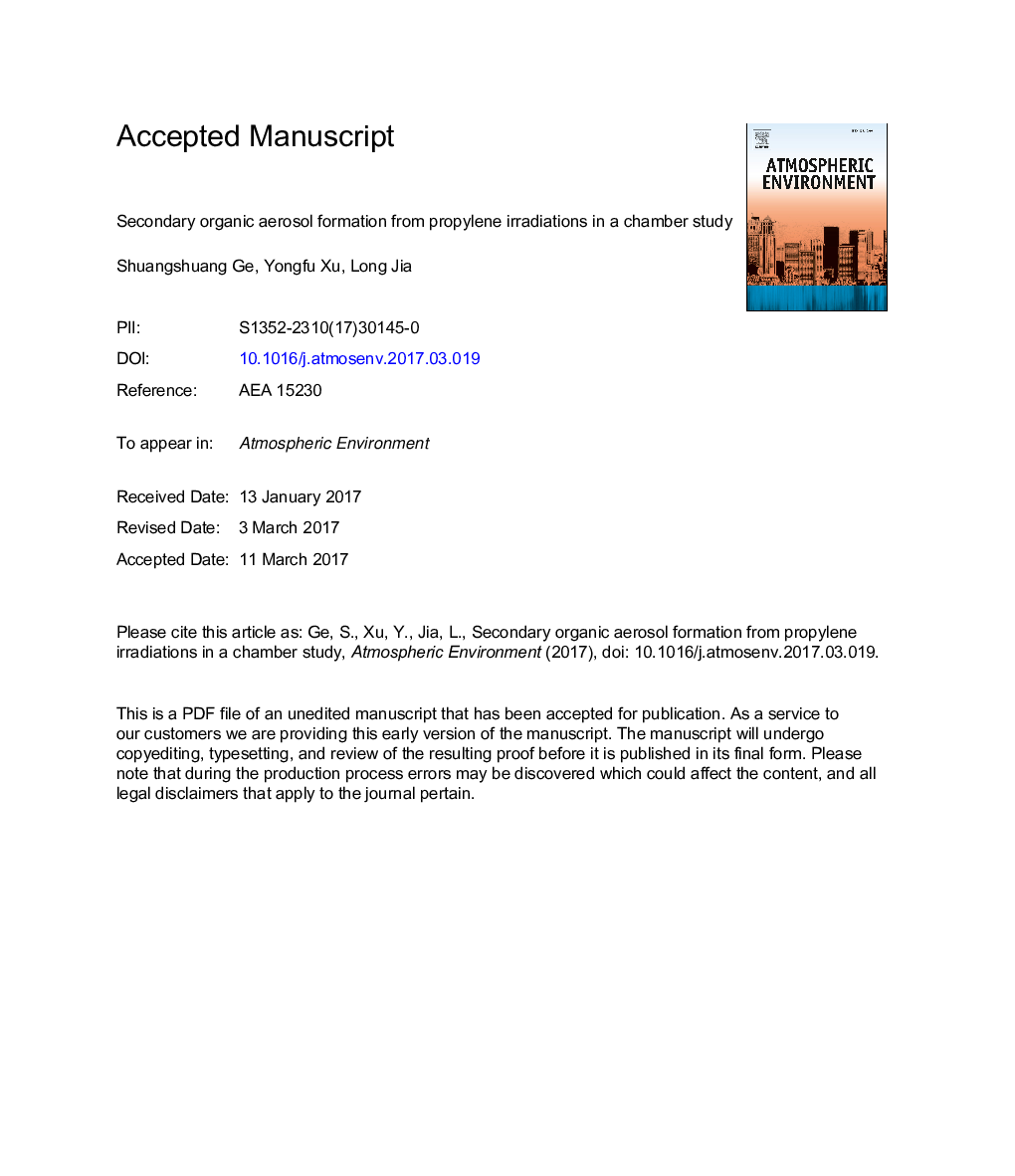| Article ID | Journal | Published Year | Pages | File Type |
|---|---|---|---|---|
| 5753339 | Atmospheric Environment | 2017 | 34 Pages |
Abstract
Some studies have shown that low-molecular-weight VOCs such as ethylene and acetylene can form SOA. However, so far propylene (C3H6) has not been studied. The current work systematically investigates irradiations of propylene in the presence of NOx (x = 1, 2) in a self-made indoor chamber. Only a small amount of secondary organic aerosols (SOA) was formed under 5% and 80% RH conditions without sodium chloride (NaCl) seed particles or in the presence of solid NaCl. When NaCl was in the form of droplets, liquid water content (LWC) increased from 34.5 to 169.8 μg mâ3 under different initial NaCl concentrations, and correspondingly the amount of SOA linearly increased from 5.9 to 29.8 μg mâ3 (SOA = 0.0164 Ã LWC+1.137, R2 = 0.97) at the C3H6/NOx ratio of 32.2-44.9 (ppbC/ppb). The initial C3H6/NOx concentration ratio considerably impacted the formation of SOA, in which the amount of SOA increased from 12.1 to 47.9 μg mâ3 exponentially as the ratio decreased from 46.5 to 6.3 with an important point of the ratio value of 11. At the ratio of less than 11 in the regime under the control of C3H6, SOA concentrations decreased considerably with increasing ratio, whereas at the ratio value of larger than 11 in the NOx controlled regime, SOA slightly decreased with increasing ratio. From combination of the analysis of different functional groups of particles by IR spectra and ESI-Exactive-Orbitrap mass spectrometer, the constituents of SOA were identified to be hydroperoxides (e.g. HOCH2CCl(CH3)OOH), esters (e.g. CH2ClC(O)OCHClCHO), organic nitrates (e.g. HO2CH(CH2Cl)C(O)OCCl(CH2Cl)C(O)OCHClCH2ONO2), etc. Furthermore, a liquid-phase mechanism of SOA formation has been proposed in this study.
Related Topics
Physical Sciences and Engineering
Earth and Planetary Sciences
Atmospheric Science
Authors
Shuangshuang Ge, Yongfu Xu, Long Jia,
